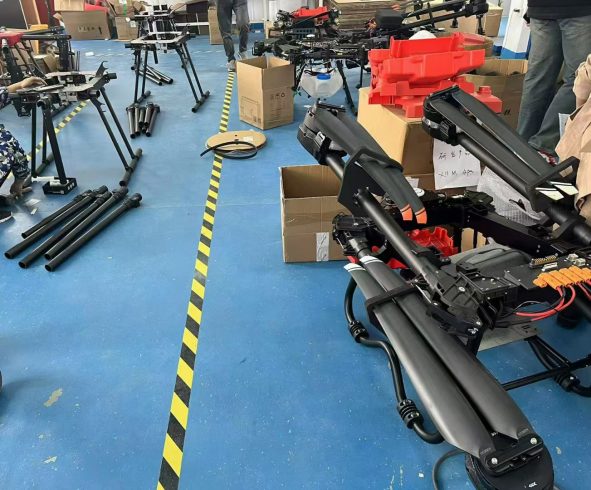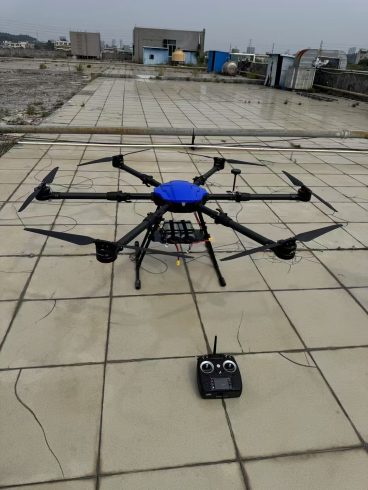![图片[1]-Drone Sprayers for Pesticide Application: A Game-Changer in Modern Agriculture-msoen](https://www.msoen.com/wp-content/uploads/2025/04/4e0da2d332214638-768x1024.jpg)
As global agricultural demands intensify, farmers are turning to drone sprayers to revolutionize pesticide application. These advanced tools combine precision, efficiency, and sustainability to address critical challenges like labor shortages, chemical overuse, and environmental harm. In this article, we explore how drone sprayers work, their benefits, and how to choose the right model for your farm.
- How Drone Sprayers Work: Technology Behind Precision
Modern pesticide drones integrate cutting-edge systems for unmatched accuracy:
- AI-Powered Targeting: Multispectral cameras and machine learning identify pest hotspots, diseased plants, or weed clusters. The drone then sprays only affected areas, reducing chemical use by 50–70%.
- Adjustable Nozzles: Ultrasonic nozzles adapt droplet size (30–500 microns) based on wind speed and crop density, ensuring 95%+ coverage efficiency.
- Autonomous Flight Planning: Pre-programmed routes using RTK-GPS achieve centimeter-level accuracy, avoiding overlaps or missed zones.
- Key Benefits of Drone Sprayers A. Unmatched Efficiency
- Speed: Cover 10–20 acres per hour, 10x faster than manual spraying.
- 24/7 Readiness: Deploy drones during brief weather windows (e.g., calm mornings) to prevent pest outbreaks.
- Scalability: Swarm technology allows multiple drones to treat 500+ acres daily. B. Cost Savings
- Chemical Reduction: Save $30–$50 per acre on pesticides/herbicides.
- Labor Cuts: Replace 5–10 workers with one trained operator.
- Lower Fuel Costs: Electric drones consume 90% less energy than tractors. C. Environmental Protection
- Targeted Application: Prevent chemical runoff into waterways, protecting aquatic ecosystems.
- Pollinator Safety: Avoid spraying near beehives using geofencing.
- Carbon Reduction: Drones emit 98% less CO₂ than traditional crop dusters.
- Case Studies: Real-World Impact Case 1: Rice Farms in Japan
- Challenge: Rice blast fungus threatened 1,000+ acres.
- Solution: Drones sprayed fungicide at 2m altitude, targeting infected paddies.
- Result: 80% disease suppression, 45% less chemical use. Case 2: California Almond Orchards
- Challenge: Spider mites resistant to ground-based sprays.
- Solution: Drones applied miticides directly to canopy tops.
- Result: 95% mite elimination, $28,000 saved on labor.
- How to Choose the Right Drone Sprayer A. Critical Features
- Payload Capacity: 10–20L tanks for large farms; 5L for specialty crops.
- Battery Life: 25+ minutes with swappable batteries.
- Sensors: Multispectral, LiDAR, or thermal cameras for pest detection. B. Regulatory Compliance
- Certifications: FAA Part 107 (U.S.), CE (EU), or local aviation approvals.
- Safety: Collision avoidance systems and return-to-home functions. C. Budget Considerations
- Entry-Level: $3,000–$5,000 for 5L drones (ideal for small farms).
- Professional: $15,000–$25,000 for 20L+ drones with AI analytics.
- Overcoming Adoption Challenges A. Initial Costs
- Leasing: Pay $200–$500/month for high-end models.
- Grants: USDA EQIP and state-level precision farming subsidies. B. Training
- Vendor Programs: Free drone piloting and data analysis courses.
- Online Certifications: Coursera or Udemy courses on agricultural drones. C. Maintenance
- Self-Cleaning Nozzles: Reduce clogging in dusty conditions.
- Modular Design: Easily replace damaged propellers or sensors.
- The Future of Pesticide Application
Emerging trends will further enhance drone sprayers:
- 5G Connectivity: Real-time collaboration with IoT soil sensors.
- Blockchain Tracking: Verify organic compliance for premium pricing.
- Nano-Drones: Treat individual plants in greenhouses or vertical farms.
Conclusion: Embrace Smarter, Greener Pest Control
Drone sprayers are redefining pesticide application, offering farmers a sustainable path to higher yields and lower costs. By adopting this technology, you’re not just protecting crops—you’re safeguarding the environment and future-proofing your farm.











暂无评论内容